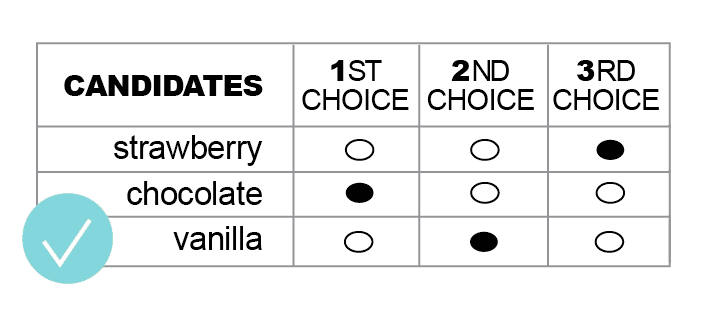To learn more about marking a ranked choice ballot, click here.
EXAMPLE: ELECTING 3 SEATS WITH RANKED CHOICE VOTING
In this example, there will be 3 winners. In order to be declared a winner, a candidate must receive the threshold (25%) plus one vote.

Candidate A wins in the first round of counting because he/she received more than 25% of the votes cast. Since ranked-choice voting is designed to waste as few votes as possible, the surplus votes for Candidate A beyond the 25% needed to win will count for those voters' next choice. Since Candidate A received seven votes beyond the winning threshold, those seven will count for those voters' second choice, adding three votes to Candidate C, two votes to Candidate D, and two votes to Candidate E.

Candidate D has the lowest number of votes and is eliminated. The eight votes Candidate D received will now count for voters' next choice, pushing Candidate B over the threshold to be elected. One vote for Candidate B is beyond what is necessary to win and is therefore counted for the voter's next choice. Candidate B is declared a winner along with Candidate A, and we have one seat left to elect among the remaining candidates.

The one surplus vote from Candidate B counts for the voter's next choice, putting Candidate C over the threshold to be elected (25% +1), making Candidate C the 3rd and final winner.







Leave a comment
0 Comments